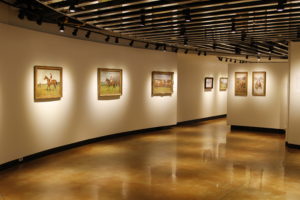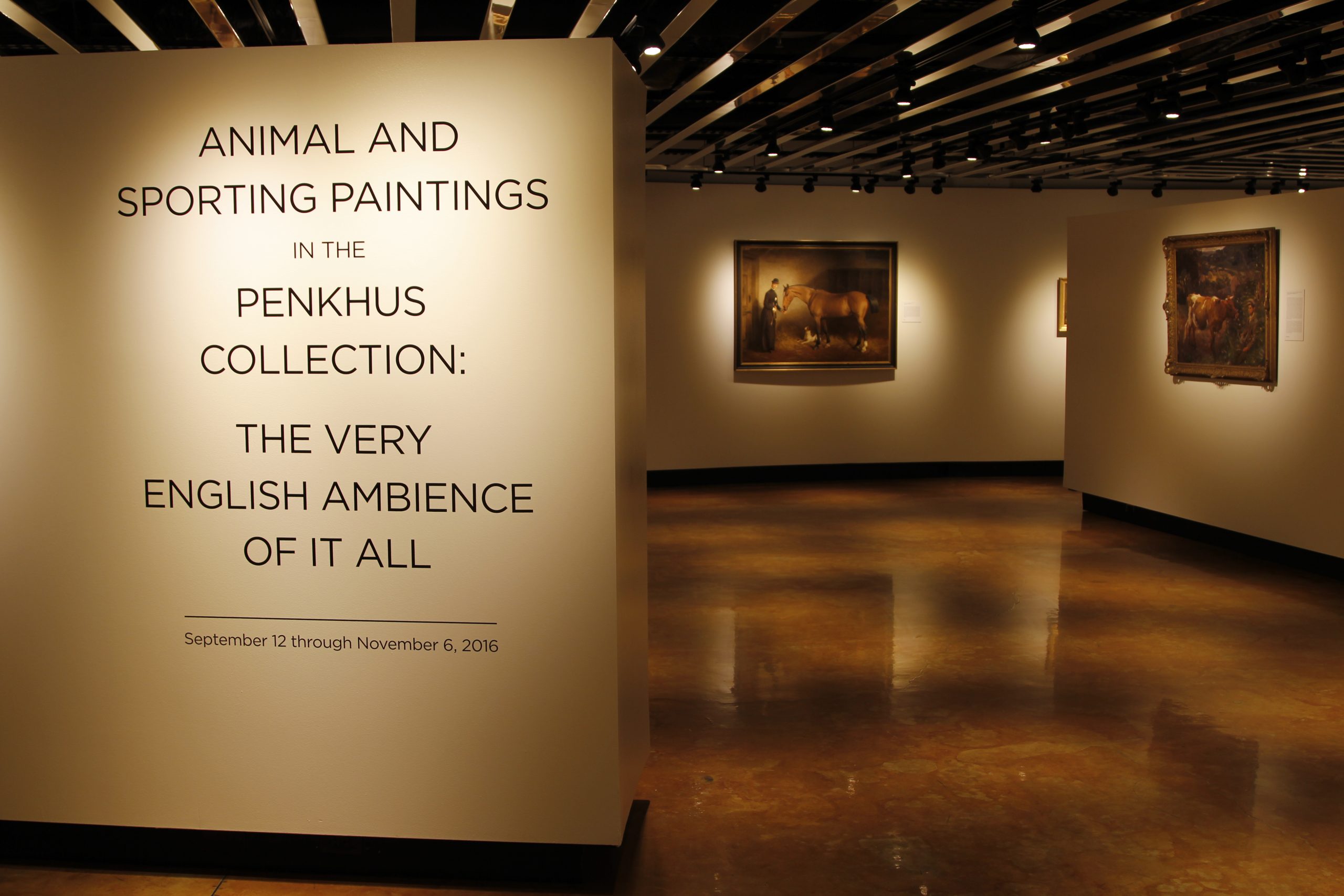The title of the current art collection in the Hillstrom Museum is The Very English Ambience of It All. The collection consists of four different sections entitled: “Livestock”, “Racing”, “Pets”, and “Foxhunting”. Given by Dr. Stephen and Martha Penkhus, these particular sets of paintings are focused mainly on the English countryside during the 19th century.
What you first notice when you walk into the collection isn’t the dramatic coloring of the pieces, or an overwhelming emotion, but a feeling of comfort and familiarity.
In most every one of the pieces, the sprawling English landscapes with their ever so slight hills seem to coax your focus toward the main animals, generally the horses.
While these horses are clearly a tool for the sport of foxhunting or racing in a large amount of the works, they are also one of admiration in the other sections of the gallery.

One of the collectors, Dr. Stephen Penkhus, explained why an American doctor would find interest in this particular genre of art.
“We picked sporting art because of our love of animals and Marty’s love of horses. Marty has been riding and showing horses since grade school. We have always been fascinated by English tradition, their sports their love of their animals and countryside,” Dr. Penkhus said.
While this collection has many pieces focused on foxhunting, it is interesting to note that foxes rarely make an appearance in any of the paintings.
“I think that appreciation of the aesthetic qualities of these beautiful works is readily acceptable even without much grounding in their cultural and historical background.” — Don Myers
They instead depict the actual hunting, which in turn leads to a grander focus on the foxhounds in the pieces, usually in large numbers. August Moehrke, one of student workers at the Hillstrom, put it in context.
“During the times depicted here, deer were becoming more difficult to find and hunt as sport, yet foxhunting was accessible for all classes of people, making it very popular. Instead of using guns, the foxhounds actually hunted the foxes themselves instead of just retrieving them,” Moehrke said.
The focus on dogs is more prevalent in the pet section of the museum, where larger portraits are based on a more photorealistic approach.
These portraits, like the portraits of the jockeys, usually don’t contain as much movement compared to the foxhunting section. This is most likely due to accurate portrayal of things and people rather than a specific action or idea like the others.
As usual with the Hillstrom Museum, it supplies all the historical context anyone could ever need directly next to each of the pieces. Therefore, any person worried that they shouldn’t go to the exhibit because they don’t know anything about the context can be put at ease. The information is extremely helpful and makes the entire exhibit very accessible.
“I tend to think that historical context is always, or at least usually, important in understanding art, especially works from earlier periods (as is the case with the majority of the 61 works in the exhibit), though I think that appreciation of the aesthetic qualities of these beautiful works is readily accessible even without much grounding in their cultural and historical background,” Director of the Hillstrom Museum, Don Myers, said.
The Penkhus’ donated their collection in remembrance of their daughter Katie, who was a Gustavus art history student and horse lover. The exhibit is free to view from 9am to 4pm during weekdays, and 1pm to 5pm on the weekends. You can see the entire collection in its full until Nov. 6 on the ground floor of the campus center in the Hillstrom Museum.
